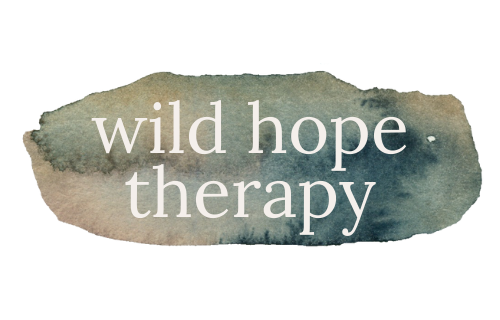my original "why"
Trigger warning: Maternal Suicide
by Sara Parko, LSW, PMH-C
A lot of people make assumptions about why we do the work we do. Of course a career or focus in perinatal mental health makes sense for someone who is passionate about lifting up other women and has a couple kids at home.
But I remember how my knees buckled when I learned that a woman I respected, admired and had called a friend had taken her life.
She had recently become a mom. We had lost touch but thanks to social media and an active network of sorority sisters I had a pulse on the goings on of most of my college friends.
The leather of the couch was cold as I fell into it, reading and re-reading the text I received. Trying to find the words to tell my boyfriend (now husband and father to my own children) that my friend had died. She had completed suicide. It felt so foreign to me at the time, something that only happens to others. And yet, for my kind and bubbly friend, life had become too much.
I am passionate about raising awareness not just about perinatal mental health but about maternal suicide rates and the noteable increased risk of suicide that birthing people face during this time of high-highs and low-lows. Suicide is the number one cause of death in the perinatal period, and it is also preventable.
Suicide during the perinatal period accounts for 20% of deaths, according to a study by Chin, Wendt, Bennett and Bhat published by the National Institue of Health in 2022. The study found that most perinatal deaths by suicide occur during the first and second trimesters as well as days 43-365 postpartum (p. 268). Social and systemic factors including younger age, marital status and/or dissatisfaction, financial stressors and race as well as comorbid mental health diagnosis increase risks for some women. “Women diagnosed with a postpartum mental disorder have a 6.2 times higher risk for self-harm compared to mothers without mental disorders. Depression is one of the most common diagnoses among perinatal patients who report suicidal ideation or who attempt or complete suicide” (p. 268). The study also noted adjustment disorders, “anxiety, bipolar disorder, schizophrenia, post-traumatic stress disorder (PTSD), and personality disorders have been associated with [perinatal] suicide attempts as well” (p. 269). Additionally, the authors found that “self-reported emotional dysregulation and poor sleep quality are associated with antenatal self-injurious thoughts and behaviors” (p. 269). These factors are significant in the critical need to not only destigmatize mental health but also to increase support and awareness for those at most risk.
Common prevention and intervention strategies recommended by Chin, Wendt, Bennett and Bhat and echoed by many other perinatal providers, advocates and organizations include increased detection through appropriate and consistent screenings, treatment of comorbid mental health conditions, improved access to care, and more integrated approaches to treatment through care teams. A strong case for addressing mental health stigma can also be made.
Increased awareness of these barriers to care and needed improvements are a focus area in Ohio with the Ohio Perinatal Mental Health Task Force at the helm. The task force is a “collaborative of individuals and organizations committed to advancing policies and initiatives that continuously improve perinatal mental health access-to-care and treatment,” according to their website. The shared goal is “for Ohio to be one of the leading states in the country in perinatal mental health education and access-to-care and treatment” (Ohio Perinatal Mental Health Task Force, n.d.)
While organizations like these and practitioners like myself work hard for systemic change, there is also more we can do to empower and educate pregnant and parenting individuals in our communities.
Be aware of factors that may contribute to the increased risk yourself or a loved one may experience.
Never be afraid to ask if someone is experiencing thoughts of suicide or self-harm. Talking about suicide does not increase the odds of suicide or present the idea to a person. Talking about suicide is the important first step to supporting someone who needs help.
Educate yourself on resources available through organizations like Postpartum Support International across the globe, the National Maternal Mental Health Hotline or POEM locally in Ohio. The 988 Suicide and Crisis Lifeline is also a resource available across the country.
I can’t imagine how low my strong, joyful and compassionate friend must have been feeling to have felt resigned to suicide. I can’t imagine what it must feel like to not be able to work through my most distressing thoughts and feelings, to not have the words to talk about my darkest thoughts and fears, or to not know where to turn for help. And I also believe she tried as best as she could.
The knot in my stomach that developed as I learned my friend had been failed by a medical system that lacks consistent screenings, appropriate follow through, and quite frankly sufficient education and awareness about maternal wellness loosens slowly with each opportunity I have to help another. To serve them. To advocate on their behalf. To educate our community and spread awareness. I doubt it will ever fully unwind, that knot, but it also keeps me going in hopes that I can offer the support that my friend so deeply needed to another mom.
She is no longer my only why; but she is the original.
To learn more about the Ohio Perinatal Task Force or to get involved visit: https://sites.google.com/poemohio.org/ohioperinatalmentalhealthtaskf/home?authuser=0
Sources:
Chin, K., Wendt, A., Bennett, I.M. et al. Suicide and Maternal Mortality. Curr Psychiatry Rep 24,
239–275 (2022). Link
Ohio Perinatal Mental Health Task Force. (n.d.).
https://sites.google.com/poemohio.org/ohioperinatalmentalhealthtaskf/home
